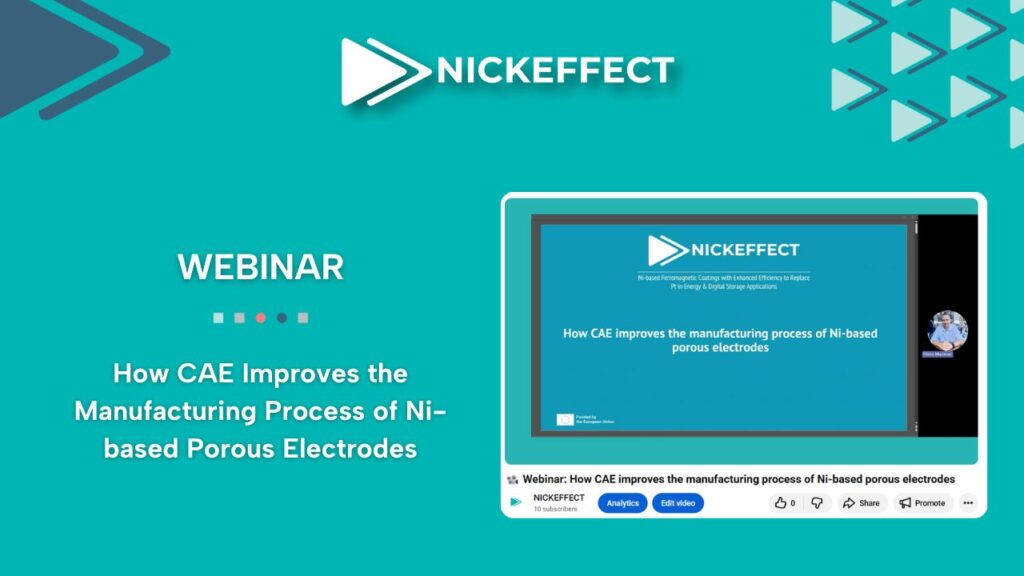NICKEFFECT latest technical webinar, “How CAE Improves the Manufacturing Process of Ni-based Porous Electrodes”, presented by project partner Elsyca, offered a deep dive into the critical role of Computer-Aided Engineering (CAE) in overcoming the challenges of scaling up next-generation electrode production.
The webinar was presented by Florin Muntean, Senior Engineer at Elsyca, who specializes in surface finishing simulations.
The Challenge: Replacing Platinum with Uniform Porosity
The core motivation of NICKEFFECT is to replace expensive and scarce Platinum Group Metals (PGMs) with more abundant Nickel for green energy technologies. To match Platinum’s electrochemical performance, the Ni-based electrodes must feature porous microstructures to achieve a higher active surface area.
The manufacturing technique of choice – electroplating- offers many advantages but presents a fundamental challenge: ensuring a uniform nickel deposit deep within the intricate pore structure. As explained in the webinar, the throwing power of the plating bath limits both the depth reached and the overall uniformity of the deposit thickness across the electrode.
Elsyca PlatingMaster: The Digital Solution
This is where CAE becomes indispensable. Elsyca utilized its proprietary software, Elsyca PlatingMaster, a powerful simulation tool for electrochemical process modeling, to analyze and optimize the process virtually, saving extensive time and costs associated with laboratory trial-and-error. The webinar walked through a crucial two-step process: Model Validation and Industrial Optimization.
Quantifiable Results: Optimization Reduces Variability
The simulations clearly demonstrated that the initial reactor setup resulted in a poor current density distribution, which would lead to non-uniform electrode properties after the full deposit. Through iterative design in the virtual environment, Elsyca identified key modifications: the addition of bigger wingnuts (acting as current robbers) and strategic placement of anode shields.
By reducing the standard deviation of the current density by nearly 25%, the NICKEFFECT team ensures that even when the large cloth is cut into smaller electrode pieces, they will all possess highly consistent electrochemical properties – a vital step toward scalable, industrial production.
The full webinar recording is available on the NICKEFFECT YouTube channel: https://youtu.be/0QTSZjQW9qE
